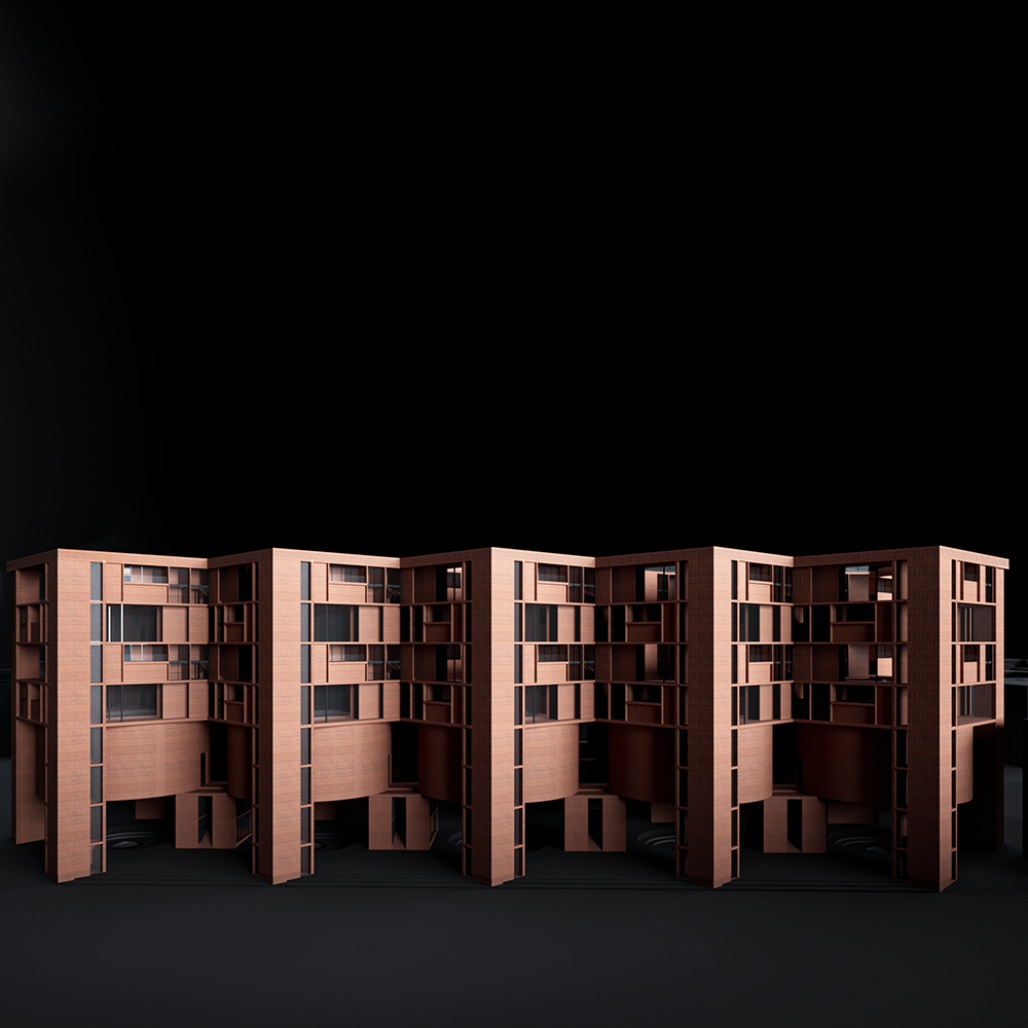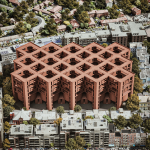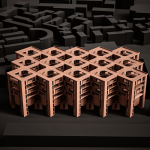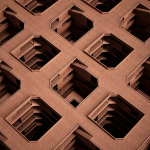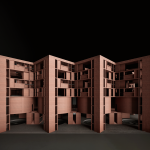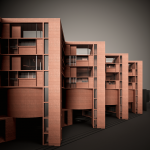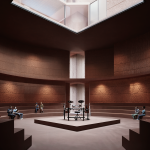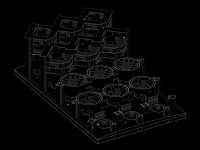This project began with a programmatic problem: How can three distinct yet related programs, each with its own formal logic, coexist across three architectural layers—creating a shared environment for living and working—without disrupting the urban rhythm around it?
Our design approach is based on a framework that shifts between problems, position, and condition.
The programs are considered not just as functional demands but as forces of field—each capable of generating a new spatial condition. We call this a Refield—a state that emerges when architecture re-negotiates context through its own language.
Our latest project is a modular housing complex in London, designed for recent graduates. It combines three networks to provide living, working, and urban spaces within a single structure. The ground layer features intersecting axes providing commercial spaces and vertical circulation, supported by the utility cores. This open space promotes urban activity through commercial units.
The second layer forms a circular volume with a central square void and accommodates a coworking space surrounded by cultural and recreational functions, while the second layer forms a circular volume with a central square void and accommodates a coworking space surrounded by cultural and recreational functions.
The third layer consists of 280 residential units arranged diagonally around the main voids and courtyards. Each level rotates 90° from the one below, with terraces located on rooftops. Through the residential levels, vertical connections including central nodes and staircases, enhance spatial interaction.
2025
Dimensions:
Length: 142 meters
Width: 90 meters
Height: 42 meters
Total Area: 50,000 sqm
Materials:
- Repurposed Shipping Containers: Modular units used as the primary structural component for residential and communal spaces, offering strength and adaptability.
- Locally Sourced Brick: Chosen for its thermal efficiency, sustainability, and contextual integration with the urban fabric of London.
- Prefabricated Composite Panels: Used for walls, floors, and facades to ensure rapid assembly and weather resistance.
- - Steel Structural Columns and Beams: Provide vertical and lateral support within the modular framework.
Fabrication Techniques:
- Off-site Prefabrication: Container units and structural panels are preassembled in controlled environments to optimize precision and reduce on-site construction time.
- Modular Assembly System: Enables flexible configuration and phased deployment, tailored to site-specific needs.
- Structural Reinforcement of Cut Containers: Modified modules are reinforced with welded joints, beams, and columns to maintain integrity.
Manufacturing/Building Process:
- Site Preparation and Foundation Installation: Groundwork accommodates vertical shafts, utilities, and modular unit placements.
- Container Module Placement and Stacking: Shipping containers are positioned and fixed using crane systems and bolted joints.
- Vertical Access and Utility Core Installation: Prefabricated cores house mechanical, electrical, and sanitation systems for all levels.
- Final Finishes and Passive Design Implementation: Includes rooftop terraces, passive cooling features, water management systems, and green integration.
Principal Architect:
Mohammad Rahimizadeh
Design Team:
Alireza Hajiesmaeili
Fatemeh Hajiali Beygi
Nazanin Salimi
Solmaz Fahimi
Visuals:
Ziba Baghban
